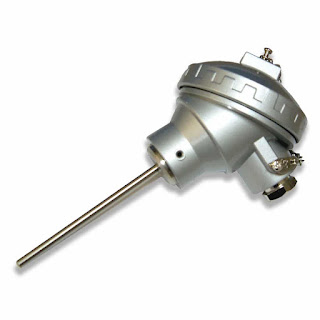Full details of RTD with working principle and types
RTD: Types and Principles
RTD stands for Resistance Temperature Detector. It is a type of temperature sensor that works on the principle of change in electrical resistance with a change in temperature. The resistance of a material increases with an increase in temperature and decreases with a decrease in temperature. This principle is used in RTDs to measure temperature accurately.
Working Principle:
An RTD consists of a sensing element made up of a metal or metal alloy that changes its resistance with temperature. This sensing element is usually made up of platinum, nickel, or copper. Platinum is the most commonly used material in RTDs due to its excellent stability and repeatability. The sensing element is usually a coiled wire or a thin film deposited on a substrate.
When the RTD is connected to a circuit, a current flows through the sensing element. As the temperature changes, the resistance of the sensing element changes, which affects the current flowing through it. This change in current is proportional to the change in temperature. The change in current is measured by the circuitry connected to the RTD, which can then be converted to a temperature reading using a conversion formula.
Types of RTDs:
1. Platinum RTDs: These are the most commonly used type of RTDs. They are made up of a sensing element made up of platinum wire or a thin film of platinum deposited on a substrate. Platinum RTDs are highly stable and accurate.
2. Nickel RTDs: These RTDs are made up of a sensing element made up of nickel wire or a thin film of nickel deposited on a substrate. Nickel RTDs are less accurate than platinum RTDs but are less expensive.
3. Copper RTDs: These RTDs are made up of a sensing element made up of copper wire or a thin film of copper deposited on a substrate. Copper RTDs are the least accurate of the three types of RTDs and are mostly used in low-temperature applications.
4. Thin-Film RTDs: These RTDs have a sensing element made up of a thin film of metal deposited on a substrate. They are smaller in size and have faster response times than wire-wound RTDs.
5. Wire-Wound RTDs: These RTDs have a sensing element made up of a coiled wire. They are larger in size than thin-film RTDs and have slower response times. They are commonly used in industrial applications.
Advantages of RTDs:
1. High accuracy and stability.
2. Wide temperature range.
3. Linear output.
4. Low drift.
5. Low self-heating.
6. Long-term stability.
Disadvantages of RTDs:
1.Higher cost compared to thermocouples.
2. Slower response time compared to thermocouples.
3. Requires external circuitry for signal conditioning.
Applications of RTDs:
1. Food and beverage industry.
2. HVAC systems.
3. Chemical and petrochemical industry.
4. Aerospace industry.
5. Power generation.
6. Medical industry.
In conclusion, RTDs are an accurate and stable temperature sensing solution that is widely used in various industries. The type of RTD used depends on the specific application requirements. Platinum RTDs are the most commonly used due to their high accuracy and stability, while nickel and copper RTDs are less accurate but less expensive. Thin-film RTDs are smaller in size and have faster response times than wire-wound RTDs, which are commonly used in industrial applications.

.jpg)



Comments
Post a Comment